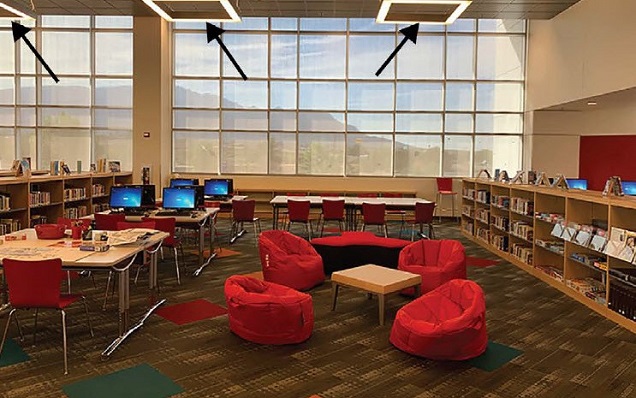The pandemic presented unprecedented challenges in our school systems. What should have been another year of school plays, book reports, and graduation ceremonies was upended by COVID-19.
Any hope that fall would signal a return to normal faded as the virus continued to take its toll. Many schools remain empty as teachers and students engage in virtual learning. With schools empty or near-empty, one step that school officials can take to improve building safety may also help provide long-term cost-savings during a time of severe budget constraints: energy efficiency retrofits.
Efficiency retrofits? How does that protect our kids?
A recent report from the Government Accountability Office (GAO) found that K-12 school buildings nationwide are facing severe infrastructure problems, concluding that more than half the public school districts in the U.S. need to update or replace multiple building systems or features in their schools – or as a teacher’s union survey put it, schools “cannot deal with facilities [even] without a pandemic.” The report particularly highlighted the state of school HVAC systems, finding that a stunning 36,000 schools nationwide have aging systems in need of updates. HVAC is a crucial part of enabling health and safety for building occupants – in a normal year, water damage caused by a leaking roof or HVAC system can lead to mold growth, bad air quality, or even school closures due to extreme heat. In the age of coronavirus, these issues have become more important than ever.
Our schools need an infusion of investment for upgraded HVAC systems, which also tend to be more energy-efficient–as well as other safety precautions–in order to make classrooms as safe as possible for students to return. Energy savings can help pay for these upgrades.
Who does this affect?
The GAO report found infrastructure issues nationwide, but these problems are often compounded in underserved communities, which are also more likely to have been hit hard by the virus. GAO authors say high-poverty districts were able to spend about $300 less per student on capital construction expenditures than low-poverty districts. This problem will be magnified by the economic fallout of COVID-19 as tax revenue crashes with businesses shuttered and unemployment high. If this economic crisis is anything like 2009 when state funding for high-poverty areas dropped by $1,500 per student compared to affluent areas’ $500 drop, then underserved districts’ ability to respond will be even more challenging.
What can we do? (How about saving $1.5B per year?)
With our schools desperately in need of funds to improve safety for their students, staff, and communities–but with that funding increasingly difficult to secure–schools must look to innovative budget approaches. Energy efficiency can help. Utility costs are the second largest expenditure for schools behind only personnel, with K-12 schools collectively spending about $6 billion per year just on energy. However, the GAO report demonstrated that there’s much room for improvement. For example, about 30,000 schools nationwide are looking to upgrade their interior lighting, such as by switching to efficient LED systems.
With upgrades like these and less-wasteful behavior, approximately 25% of school energy costs could be saved. That’s a whopping $1.5 billion each year that could be put toward safety precautions and helping kids catch up on learning after an unprecedented year.
Such upgrades are perfectly suited for another aspect of COVID-19 recovery: bringing good, local jobs into communities. Energy efficiency workers faced layoffs and uncertainty under stay-at-home orders, but adapting our schools to make them safer and more sustainable is exactly the kind of project needed to get them back to work. This work can be done whether a school district plans to reopen classrooms or anticipates virtual learning to continue. Upgrades can take place either after hours, or out of student-occupied space. So as school officials plan for the daunting task of enhancing health and safety with limited funds, they’d be wise to remember the many-sided benefits of energy efficiency for community recovery and long-term cost benefits.
Join us on Energy Efficiency Day on October 6, 2021, to celebrate energy efficiency. Sign up as a supporter or ask your elected officials to issue a proclamation.


Recent Comments